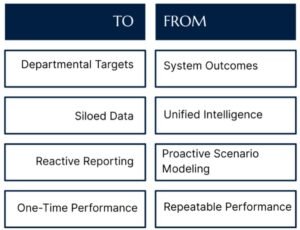
It’s simply because sales is an activity while revenue is an outcome of a connected system.
In every growth journey I have been part of, I have observed there comes a stage when the sales curve flattens, even when the product is solid, the brand is visible, and the team is putting in the effort. The usual response to this is to add sales headcount, launch new campaigns, or tweak incentives.
These actions give a short-term spike, but growth plateaus again soon after. It’s not because the market is saturated or the team isn’t capable. It’s often because the system isn’t connected.
Sales, marketing, and customer success are all working hard but not always together. That’s where the real gap lies. Without a unified system, efforts remain fragmented, data insights are incomplete, and opportunities slip through unnoticed.
The Misunderstanding of Revenue Operations
Revenue Operations (RevOps) is often misunderstood as a backend support function: managing dashboards, enforcing CRM hygiene, or pushing reports.
In reality, RevOps is the integrated engine behind predictable revenue growth. It connects sales, marketing, customer success, and analytics, not through reporting lines, but through shared design. When built well, it turns effort into efficiency, data into foresight, and growth into habit.
The Framework: 3 Levers of Repeatable Revenue
Sustainable revenue engines rely on three interlocking levers:
1. Cross-functional alignment: True growth happens when marketing’s promise, sales’ execution, and customer success’ delivery operate in sync. Alignment isn’t about more meetings; it’s about shared metrics, shared visibility, and shared accountability.
Every team understands the ripple effect of their work on the others, creating a seamless experience for customers.
2. Data-driven forecasting: High-performing organizations don’t just report numbers; they anticipate them. RevOps connects data across the funnel, from lead sources to retention metrics, making forecasting a living, learning process instead of a quarterly ritual.
Predictive insights allow leaders to allocate resources proactively, identify risks early, and make better decisions at every stage of the customer journey.
3. Continuous optimization: The best teams treat revenue systems like products: always tested, refined, and improved. Every cycle, the question shifts from “How much did we sell?” to “What did we learn about how we sell?”
This mindset ensures the revenue engine evolves continuously, adapting to market changes and customer behaviors without relying on heroic efforts.
A Practical Shift for Leaders
If you are leading growth or operations, here’s a lens worth applying:

This is maturity – moving from managing numbers to designing flow, and from isolated wins to consistent, scalable outcomes.
Where This Works in Practice
Here’s the case of a leading B2B company that redefined RevOps by synchronizing marketing, sales, and customer success into one seamless rhythm. Instead of separate reviews, each team brought insights from customer sentiment, data trends, and pipeline health.
Within six months:
- Conversion predictability improved by 30%
- Average sales cycle shortened by two weeks.
There was no massive restructuring or new tech stack. It was just clear design, shared visibility, and integrated thinking.
The Takeaway
Sales alone don’t drive sustainable revenue growth. And Revenue Operations isn’t just an efficiency project but it is a clarity project.
It builds coherence across people, processes, and priorities, turning growth from a lucky streak into a repeatable, scalable outcome. The right question is no longer “How do we sell more?” It’s:
“How do we keep succeeding, predictably, as we scale?”
That is where RevOps proves its real value, not as a department, but as the quiet architecture behind repeatable revenue success.
#RevenueOperations #Strategy #Leadership #Growth #BusinessDesign #OperationalExcellence


